Today's Guide to the Marketing Jungle from Social Media Examiner...
presented by 
The weekend is almost here, Alluser! Here's a recap of the most important insights, trends, and updates from the week. Catch up in minutes and go into next week prepared.
In today's edition:
-
Hauling your video strategy out of the past
-
Optimizing your lead gen journey
-
Organic social media content ideas
-
Connecting and converting on LinkedIn
-
Becoming the recognized AI expert in your company
-
YouTube Updates: Shorts editing tools, Mid-Roll ads changes, and more
-
How much traffic is AI sending you?
-
The Gemini feature your Workspace Admin needs to unlock
-
🗞️ Industry news from LinkinedIn, Meta, YouTube, and more
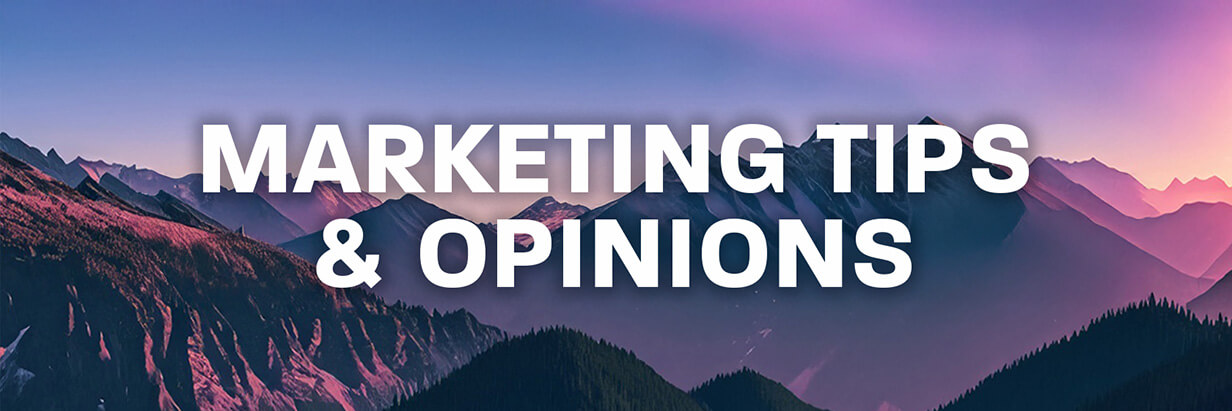
Is Your Video Strategy Stuck in the Past?
Think your video marketing is on point? Think again. The landscape has shifted dramatically, and what worked just two years ago might actually be hurting your brand today.
In this eye-opening breakdown, Ben Amos reveals five video strategies that have officially flatlined in 2025's digital ecosystem. Attention spans are shrinking fast, and platforms like TikTok, Instagram, and YouTube have completely reshaped viewer expectations.
Today's audience isn't just looking for information—they're demanding content that speaks directly to their specific needs and preferences. Generic, one-size-fits-all videos? Dead. Those long-winded talking head monologues? Absolutely buried.
But don't worry—for each outdated approach, Ben offers practical alternatives that you can implement immediately to boost engagement and drive real results. With platform-specific optimizations, these actionable insights could completely transform how your videos perform. Watch more here.
5 Lead Gen Templates
Ever wonder what makes someone fill out that lead generation form on your website? It's not just one thing—it's dozens of little factors working together like a well-oiled machine.
In his latest LinkedIn newsletter, Andy Crestodina breaks down the anatomy of successful lead generation into five key templates and 44 actionable tips that keep visitors flowing through your funnel instead of hitting that dreaded back button.
From crafting blog posts that establish authority to designing service pages that convert, he shows you exactly what elements belong where—and why they matter.
Did you know that 87% of backlinks to his website point to blog content, not sales pages? Or that tiny tweaks to your thank you page could dramatically increase engagement with new leads?
Whether you're building from scratch or optimizing what you have, you'll discover the psychological triggers that transform casual visitors into qualified leads. Read more here.
50+ Content Prompts for Organic Social Posts
Need to stop collecting followers and start building an audience that converts? You have to lean into the know, like, and trust concept.
As it turns out, there's a specific pattern to how trust builds online, and it mirrors exactly how we form relationships in real life. First comes the small talk that makes people comfortable, then the big talk that demonstrates your value and makes the offer.
So, how do you map your content to this pattern?
Chelsea Peitz shares a three-part content framework that perfectly matches how our brains are wired to connect—complete with dozens of content ideas that feel authentic without crossing your privacy boundaries. Read more here.

Exclusive Invite for Alluser: Revolutionize Your Marketing With AI
You're invited to join our groundbreaking community. It's a place for marketers like you who want to discover how to transform their marketing using AI.
Introducing the AI Business Society!
When you become a member, you get access to advanced how-to AI marketing training and a network of forward-thinking marketers who are all on a similar journey. You won't find a group like this anywhere else.
"I have found my people. I love chatting about our experiences with AI and supporting each other on our journey toward the future. Thank you for starting this community," said member Marisa Shadrick.
Yes, I am ready to discover how to use AI.
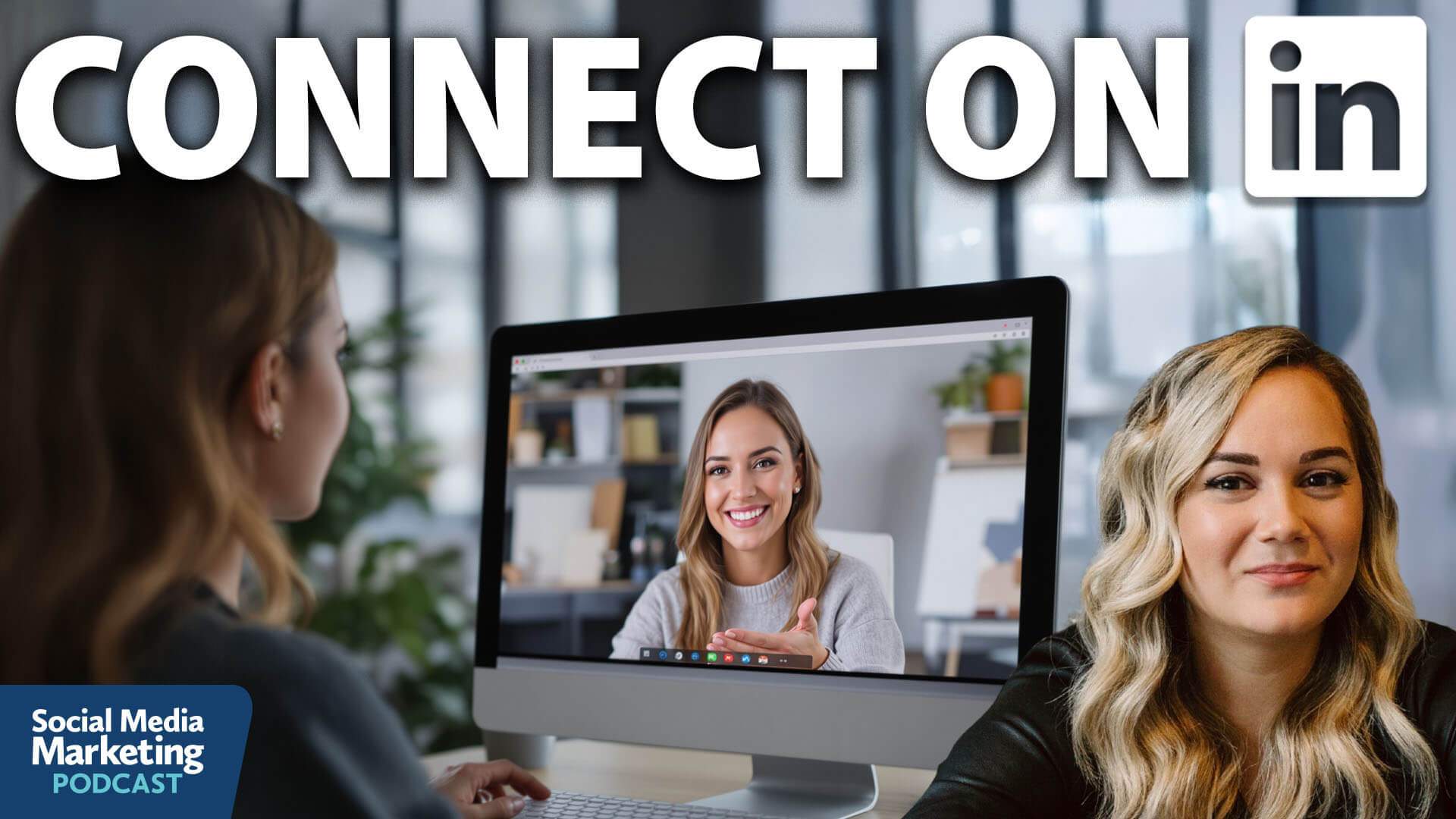
Advanced LinkedIn Networking: How to Connect and Convert
Are you struggling to turn LinkedIn connections into real opportunities? Wondering how to go beyond surface-level networking and actually convert conversations into business results?
This advanced LinkedIn networking strategy helps you build authentic relationships, boost engagement, and turn your professional presence into consistent growth for your brand or business.
Lay the Relational Groundwork for Successful LinkedIn Networking Efforts
When you've identified someone you want to connect with, Alexis recommends following them first as a low-pressure way to get on their radar.
After following, engage thoughtfully with their content. Don't just comment "great post" or use AI-generated generic responses. Instead, add value to the conversation by sharing your perspective or related experiences.
Before sending a connection request, do some research. The person's "About" section is a goldmine of information about their background, interests, and goals. Alexis also recommends tools like the Chrome extension Crystal, which predicts personality types based on LinkedIn profiles using the DISC model. This insight helps you tailor your networking approach to match their communication style.
How and When to Craft a Personalized Connection Request
When you're ready to send a connection request, make it specific and personal. Alexis outlines three tiers of personalization:
-
Bottom tier: "Hey Mike, I love what you're doing at Social Media Examiner. I would love to connect and learn more." This generic approach might look automated.
-
Middle tier: "I love your podcast."
-
Top tier: "I loved in X episode when you were interviewing X and when you talked about X."
The more specific your request, the more likely it will be accepted.
Timing matters, too. Spend a week or two following and commenting on their posts before reaching out.
The First Touchpoint After You Connect
Once your connection request is accepted, avoid these two common mistakes:
-
The immediate sales pitch: Never send a sales pitch minutes, hours, or even days after connecting. This approach rarely works and damages your credibility.
-
The empty thank you: Simply saying "Thanks for accepting my connection request" puts the burden on the other person to continue the conversation. Instead, include a question or topic to discuss that moves the conversation forward.
Ask Engaging Questions
Rather than a sales pitch or empty thank you, ask an interesting question about something specific you noticed in their content. This opening gives them a clear path to continue the conversation without putting pressure on them to come up with topics to discuss.
Alexis also suggests fun questions like "What's your go-to coffee shop order?" which not only creates engagement but can also provide insights into the person's personality. Someone who orders black coffee might be no-nonsense and analytical, while someone who orders complex custom drinks might prefer more personalized communication.
The Second Touchpoint After You Connect
To maintain the relationship, continue engaging with their content by liking, commenting, and sharing when relevant.
Alexis also recommends setting calendar reminders for follow-ups two to three weeks after connecting and says using voice notes or video messages adds a personal touch because it lets someone hear your voice or see your face.
Your message can be as simple as, "Hey, I just want to see how your week is going." You can also reference a specific post they shared or a milestone they achieved. For example: "Hey, so-and-so, I saw your post on X. It was so good. I'm just checking in to see how things are going on your end."
The key is maintaining authentic engagement, almost like how a friend might show up. What do you want out of a friend? You want a friend who shows up in your comments, likes your content, and watches your stories.
Set Up a Virtual Coffee Chat
This call should be a no-agenda, no-pitch conversation with an agreed-upon 15-minute time limit and purpose: to let both parties learn more about each other as people, not to do business.
Try something like: "It's a fifteen-minute call, and I do stick to the fifteen minutes... I would love to hear more about your work on X." This specificity makes the invitation more appealing and less threatening.
Converting LinkedIn Connections
When the relationship has developed enough, use the MICK framework for natural conversions that don't feel rushed or pushy:
-
Make It Mutual: Set the tone by establishing that the conversation is about exchanging value, not just one person taking. Say something like, "If you're open to it, I'd love to swap insights and hear more about what you're building."
-
Invite, Don't Impose: Extend an offer without expectations, like suggesting a virtual coffee chat. This gives the other person the freedom to accept or decline without pressure.
-
Clarify the Vibe: Be transparent about what you're bringing to the table or what you're looking for. Specify that it's a casual 15-minute chat and say something like, "I'd like to explore how I can support your work."
-
Keep the Door Open: Whether they accept or decline, leave a positive impression. Respond graciously to rejection with something like, "If now is not the time, no worries at all. Glad that we connected."
Today's advice is provided with insights from Michaela Alexis, a featured guest on the Social Media Marketing Podcast.
Watch the full interview on YouTube
Becoming an AI Expert in Your Company or Industry
Worried you're falling behind on AI while others in your industry are racing ahead? Unsure how to position yourself as the go-to AI resource inside your company—even if you're not a developer?
AI Means Job Security in an Evolving Landscape
AI expertise has emerged as one of the most valuable skills in today's rapidly evolving business landscape.
The business impact is undeniable. According to Chris Daigle, a recent study involving Procter & Gamble found that "an employee who has been properly trained in AI will outperform an entire team of employees who are not using AI." This extraordinary productivity advantage explains why AI-enabled professionals are so highly sought after.
The demand for AI-enabled professionals vastly exceeds the supply, creating unprecedented opportunities for those willing to develop these skills. Daigle notes this gap is widening as businesses realize they need AI expertise.
While many professionals worry that AI might eliminate their jobs, the real threat is being left behind for others who embrace it.
Unlike general AI tools that augment human capabilities, autonomous AI agents will be able to perform complete workflows with minimal supervision. This technological shift is leading to a fundamental reassessment of workforce needs. Businesses won't need as many people as they have in the past.
However, this doesn't spell doom for everyone. Organizations need people who understand their business needs and how AI can address them, and they'll turn to their AI-savvy employees first.
This creates a unique position of job security: being AI-enabled makes you the bridge between traditional business operations and emerging technologies.
How to Demonstrate Your AI Expertise to Your Boss in 15 Minutes or Less
Consider this scenario: Your boss discovers you've been learning about AI and asks you to present a deck on how to use AI in Marketing to your team—in just 15 minutes. Here's how an AI-enhanced approach might look with detailed tool insights:
Ask Perplexity to give you an outline for using AI in marketing. In 60-120 seconds, you'll have a complete research outline.
Copy Perplexity's output and paste it into Gamma. In about two minutes, you'll have a professionally designed presentation you can export in different file formats.
Use Fathom to take notes during the presentation meeting.
After the presentation, upload the transcript from Fathom to ChatGPT or Claude to write a follow-up email:
I need to create an email for the attendees of this meeting. I want my boss to know that I'm eager to assist the team in growing their AI skills. I'm eager to take a larger role with the organization because of what I'm learning about AI.
The AI will produce a professional follow-up email you can immediately copy and paste into your email client.
How to Become a Recognized AI Expert
The window of opportunity to establish yourself as an AI expert in your field is wide open, but it won't remain that way indefinitely.
The good news is that getting started requires minimal investment. Most essential AI tools cost $20-30 per month, and many learning resources are free. The bigger investment is your time and willingness to experiment, learn, and share your knowledge.
Start by identifying tasks you dislike doing and aren't particularly good at anyway. Marketing and creative departments offer particularly easy wins, as AI tools excel at content creation, editing, and ideation tasks.
Pro Tip: Rather than trying to keep up with every new AI release, Daigle recommends mastering a select few tools in each category. If the tool you're using doesn't have an emerging feature, it will soon, making deep knowledge of a few tools more valuable than surface-level familiarity with many.
Establish Your Influence Within Your Company
When you discover useful AI tools, applications, and techniques, demonstrate them with your colleagues. This helps others while positioning you as a knowledgeable resource. Then, when people get stuck with technology issues, they'll come to you for help.
As you implement AI solutions, track the improvements in productivity, quality, and timelines. When your department starts showing efficiency gains, leadership will naturally ask what's behind the success. The answer will be you, your company's AI expert!
4 Ways to Expand Your Influence Beyond Your Company
-
Host AI-focused gatherings for professionals in your local area. You don't need to be the featured speaker, simply organizing the event positions you as a connector and knowledge resource.
-
Speak at events for local business groups, chambers of commerce, and economic development councils.
-
Create content that documents your exploration of AI. Start with written posts on social media platforms like LinkedIn, then potentially expand to video content or podcasts. You don't need to position yourself as the ultimate authority—simply asking good questions and facilitating learning can establish you as a valuable resource.
-
Consider pursuing certifications or completing courses that provide credentials you can display on your resume or LinkedIn profile.
Today's advice provided with insights from Chris Daigle, a featured guest on the AI Explored podcast.
Watch the full interview on YouTube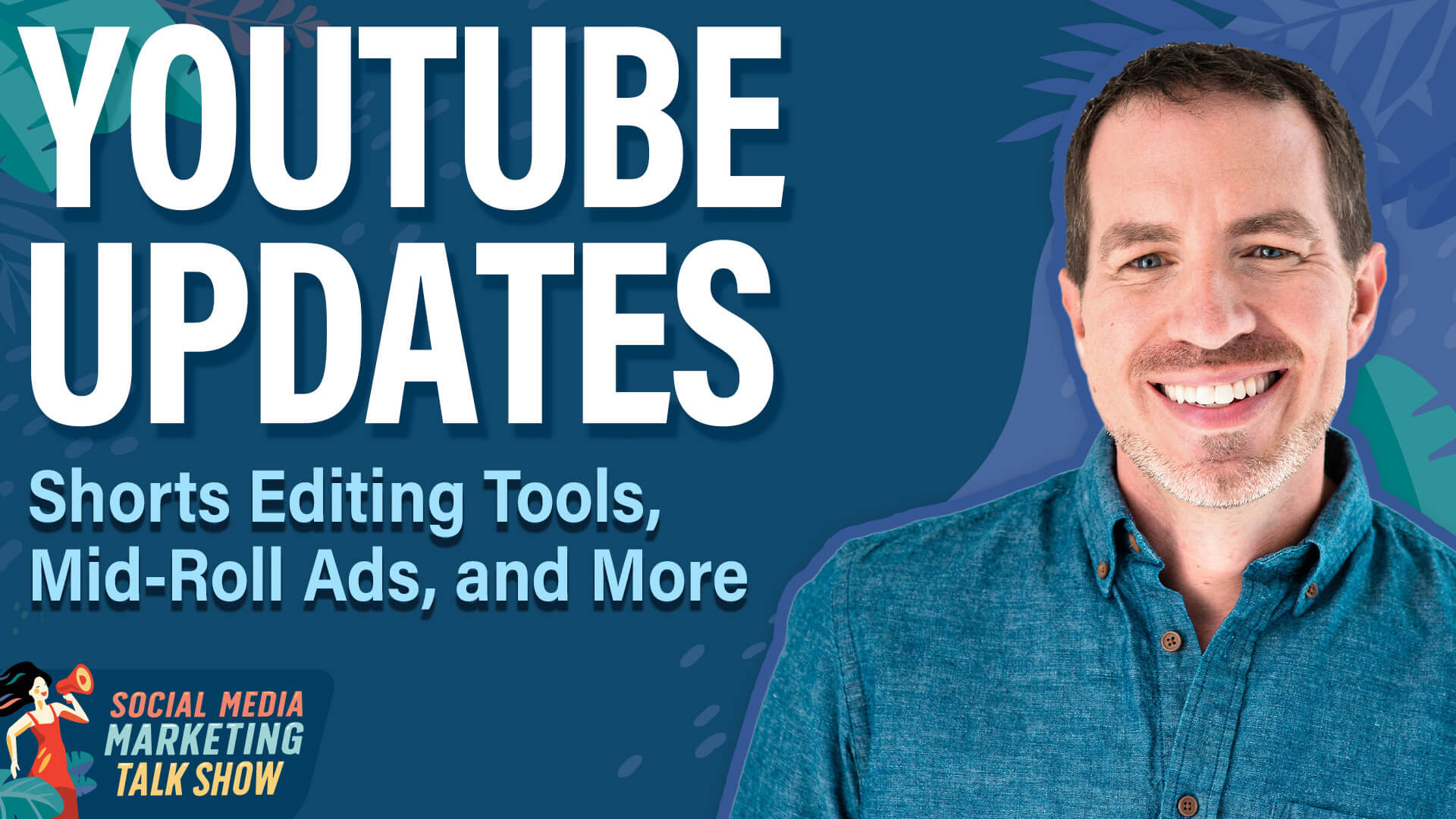
On this week's Social Media Marketing Talk Show, Jerry Potter discusses the latest YouTube news and what it means for marketers like you.
YouTube Analytics Change for Shorts
YouTube has fundamentally altered how it measures viewership for Shorts.
Previously, viewers needed to watch a specific portion of a Short for it to register as a view, similar to the 30-second threshold for long-form videos. Now, YouTube counts a view the moment a Short appears on screen, effectively treating views more like impressions. The previous, more engagement-focused metric has been renamed "engaged views" and relegated to advanced analytics sections.
Jerry shared data from his recent Short, which showed 350 total views but only 200 engaged views, highlighting the significant difference between content being served versus actually watched.
This shift may impact how marketers interpret their Shorts performance and could require adjustments to reporting methodologies, especially for those managing client accounts.
New YouTube Shorts Creation Tools
YouTube is substantially expanding the creative toolkit for Shorts creators with several editor enhancements. The improved video editor now enables precise clip timing adjustments, content rearrangement, and better synchronization with music and text. Template functionality is being upgraded to incorporate gallery photos, making it easier to create product showcases with professional transitions and music syncing.
Later this spring, creators will be able to add custom image stickers from their gallery, offering new branding opportunities. Additionally, YouTube is introducing AI-generated elements, including custom stickers created from text prompts and copyright-free instrumental music that creators can generate by specifying style, tempo, and format preferences.
Another innovative feature being tested is automatic content-to-music synchronization, which can create beat-matched edits—particularly valuable for product demonstrations and event highlights that would benefit from professional-looking cuts without extensive editing.
Visual Guides for Shorts Editor
YouTube is implementing visual alignment guides in the Shorts editor interface to improve content positioning. These guides will display lines indicating where platform UI elements (such as the Shorts label, engagement buttons, description fields, and user handles) will appear when the content is published.
This seemingly simple addition addresses a significant creator frustration—having key content elements unintentionally hidden by YouTube's interface overlays. By showing exactly where these elements will appear during the editing process, creators can ensure their most important content remains visible to viewers, enhancing overall video effectiveness and reducing post-publication disappointments.
Changes to Subscriber Notifications
YouTube is testing a refined notification system to prevent notification fatigue. For channels that publish content frequently (especially those now producing multiple Shorts alongside regular videos), viewers who have enabled "all notifications" but consistently don't engage with the content will temporarily stop receiving alerts.
Importantly, active subscribers who regularly interact with notifications will continue to receive them as usual.
The platform clarified that this change won't affect channels with infrequent upload schedules.
This adjustment appears designed to balance creator reach with viewer experience as channels diversify their content types and increase publishing frequency, particularly in response to the growing importance of Shorts in overall channel strategy.
Mid-Roll Ads Updates
Beginning in May, YouTube is overhauling its mid-roll advertising system to optimize ad placement and viewer experience. The platform will automatically introduce additional ad slots at what its algorithms identify as "natural breakpoints" in videos, even for content where creators have previously established manual ad placements.
This change reflects YouTube's response to the increasing production of longer-form content and the growth in living-room viewing. Creators will gain access to performance data showing which manual and automatic placements are most effective.
For those preferring to maintain complete control over ad placement (such as creators who strategically position ads after "hook" moments), an opt-out option is available through the Earn tab in YouTube Studio until May 12.
Dynamic Host-Read Ads for Podcasts
YouTube is developing dynamic host-read ad capabilities for podcasts, bringing a valuable audio podcasting feature to the video platform. This technology will allow podcast creators to simultaneously update promotional content across their entire episode library, making it possible to promote time-sensitive events, product launches, or seasonal offerings across both new and archival content. Unlike standard YouTube ads, these would appear as in-content promotions read by the show's host.
Jerry noted this feature could be particularly valuable for channels that experience unexpected viewership surges on older content, providing an opportunity to promote current offerings to these new audience members. While currently focused on podcast content, the host expressed hope that similar functionality might eventually extend to standard YouTube videos, which would significantly enhance marketing capabilities for content creators.
AI Content Tools for YouTube
YouTube is launching several AI-powered creation tools to assist content planning and development. "Brainstorm from Anywhere" analyzes a channel's historical performance data and audience comments to generate tailored video ideas.
"Hooks" provides AI-suggested opening sequences designed to capture viewer attention in those critical first seconds. The "Quick Saves" feature allows creators to store promising ideas generated by these tools for later development.
These native YouTube tools join a growing ecosystem of third-party AI solutions for content optimization but offer the advantage of direct integration with YouTube's data and analytics. This development suggests YouTube is taking a proactive approach to helping creators leverage AI for content planning rather than leaving this space entirely to external tools.
End Screen Updates
YouTube is testing viewer controls for end screens, allowing audiences to hide these promotional elements when they obstruct important video content. The feature, being tested on mobile and desktop platforms, adds a toggle that removes endscreen elements, with a "show" button in the top-right corner, allowing viewers to restore them if desired.
This change addresses a common viewer frustration when important visuals or information in the final seconds of videos become obscured by promotional elements. For creators, this suggests a need to reconsider end screen placement and timing, potentially adjusting filming and editing approaches to ensure critical content isn't positioned where endscreens typically appear while still leveraging these important navigational and subscription tools.
AI Content Protection
YouTube is enhancing its content protection systems in response to the proliferation of AI-generated media. The platform has updated its privacy processes to allow individuals to request the removal of synthetic content that simulates their likeness without permission. A new pilot program provides influential figures (celebrities, politicians, and public personalities) with specialized tools to monitor and manage their AI representations on the platform.
Additionally, YouTube is inviting select creators to contribute video selfies to help develop more sophisticated AI detection systems that can identify unauthorized synthetic representations.
Jerry reminded listeners to properly complete the AI disclosure setting during video uploads, suggesting this previously optional step may become mandatory as YouTube strengthens its AI content governance.
Mail-Free Pin Verification
YouTube is modernizing its channel verification process by introducing digital pin verification in 24 markets, eliminating the need for physical postcards in the mail. This update streamlines the monetization approval process, reducing delays caused by international mail delivery and addressing issues with lost verification codes.
This seemingly minor update represents a significant quality-of-life improvement for creators approaching monetization thresholds, particularly those in regions with less reliable postal services.
Watch it on YouTube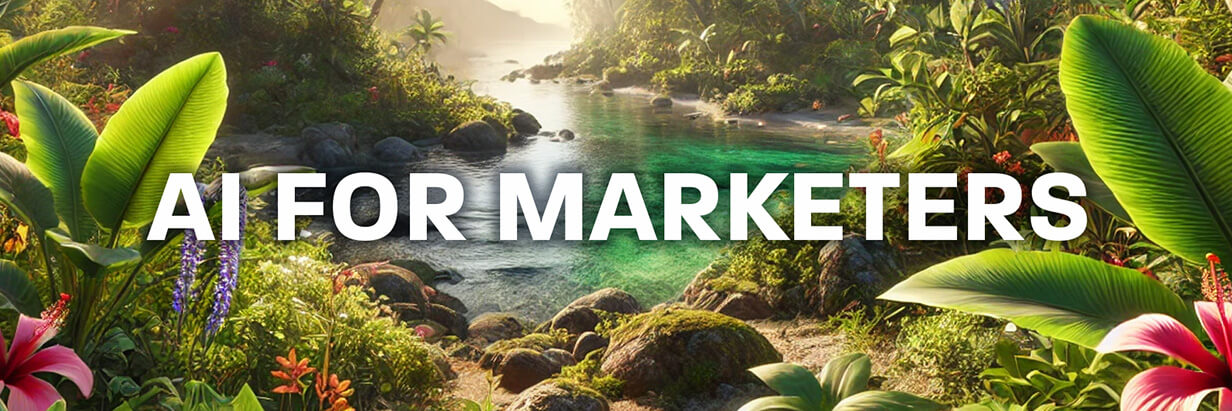
See How Much Traffic AI Search Is Sending You
You might not be properly tracking thousands of website visitors.
Have you thought about how LLMs and AI search tools are impacting your website traffic?
JJ Reynolds shows you how to see exactly which AI tools are sending visitors your way. We're talking ChatGPT, Perplexity, Gemini, Deep Seek, and more, all neatly organized to show you trends your regular analytics might be missing.
His month-over-month comparison charts reveal whether you're gaining momentum or losing ground in the AI search game. Read more here.
Gemini's Best-Kept Beta Feature
Nicole Leffer found a hidden Gemini feature that completely changed her workflow.
This under-the-radar tool doesn't just work alongside your Google Workspace—it can find contextual connections between your emails, documents, and calendar that you didn't even realize existed.
One simple character in your chat box could unlock an entirely new way of working. Nicole shows you the exact steps to check if you have access and how your admin can activate it.
Once you experience how it transforms fragmented information into coherent insights, you'll wonder how you ever worked without it. Read more here.
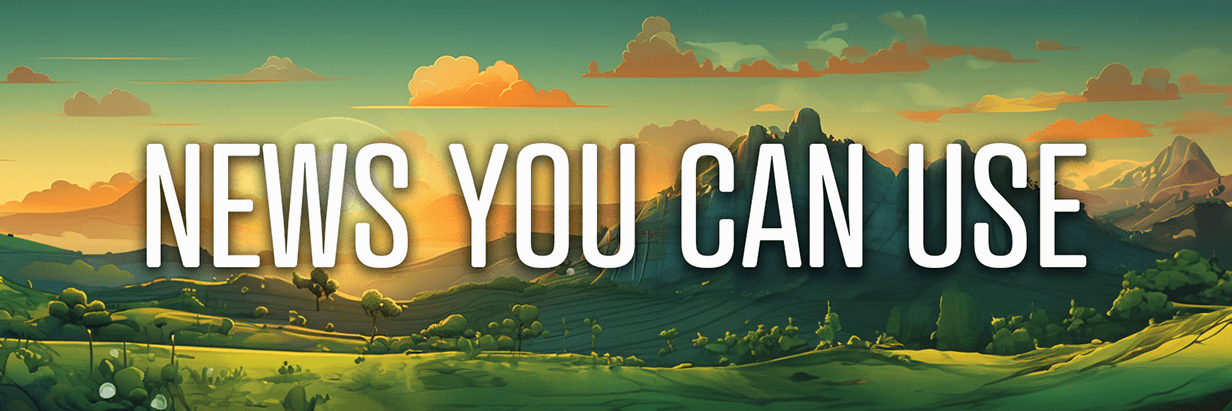
Lightweight Version of ChatGPT Deep Research Rolls Out: OpenAI announced the release of a new lightweight version of its ChatGPT deep research tool for ChatGPT Plus, Team, and Pro users, with availability for free users starting April 24. Powered by a version of OpenAI's o4-mini model, the lightweight tool offers shorter responses while maintaining depth and quality, and it is designed to be cheaper to operate, allowing for increased usage limits. Once users reach the limits of the original deep research version, queries will automatically switch to the lightweight version. OpenAI stated that Enterprise and educational users will gain access to the lightweight deep research next week with the same usage levels as Team users. TechCrunch
Meta Ads Changes: The platform has updated its ads creation interface by relocating Info Labels for catalog items to the Advantage+ creative enhancements section and renaming them Dynamic Overlays. While the core functionality remains the same, users now have the added flexibility to toggle each label type—price, strikethrough price, percentage off, and free shipping—on or off individually rather than being limited to selecting just one at a time. Swipe Insight
Threads Feature Updates and Domain Change: Meta announced the platform's migration from Threads.net to Threads.com, along with new updates to improve the web experience. Users can now view their custom feeds at the top of the page in the same order as on mobile, access liked and saved posts through the main menu, and add columns with a new icon for easier display customization. Threads also introduced the ability to copy posts as images for sharing on other apps and added a pop-up composer for posting while scrolling. Meta
Shopping in ChatGPT: OpenAI has updated ChatGPT's web search capabilities to enhance online shopping with personalized product recommendations that include images, reviews, and direct purchase links. Available in OpenAI's default AI model, GPT-4o, the enhanced shopping features will be accessible to all ChatGPT users worldwide, including those on the Pro, Plus, and Free tiers and users who aren't logged in. Users will receive tailored product recommendations across various categories, including fashion, beauty, home goods, and electronics. The update will not include advertisements. OpenAI will not receive commissions from purchases made through the ChatGPT platform. The shopping results will be independently determined and will rely on structured metadata from third-party sources such as pricing, product descriptions, and reviews. Reuters
Meta Launches Meta AI App: Meta AI is available across various Meta platforms, including WhatsApp, Instagram, Facebook, and Messenger, but it now also exists as a stand-alone application. The app includes a Discover feed where users can share and explore how others are using AI. The app offers personalization by remembering specific user preferences and drawing on information users have already shared on Meta products. The Meta AI app is now the companion app for Meta's AI glasses, replacing the Meta View app for Ray-Ban Meta glasses. Users can start conversations on their glasses and continue them in the app or on the web through the history tab. The web version of Meta AI has also been upgraded with voice interactions and the Discover feed, optimized for larger screens and desktop workflows. Meta is testing additional features, including a rich document editor in select countries and the ability to import documents for analysis. Meta
X Addresses Shadowban Concerns With Tips for Visibility: Some X users have reported issues using hashtags in posts and experiencing unexpected behavior with replies and mentions. In response, the platform outlined several reasons posts may not show up and provided advice to help users make sure mentions, replies, and hashtags publish correctly. X
Blurred YouTube Thumbnails Test: A new test feature blurs thumbnails for search queries with sexual themes. While thumbnails may be blurred, video titles, channel names, and descriptions will remain visible. Users will have the option to unblur thumbnails if they choose. This test aims to determine if this feature helps users avoid accidentally viewing sensitive content that still follows YouTube's Community Guidelines. The test is currently being rolled out to a small percentage of YouTube viewers. YouTube
YouTube Creator Feature Updates: YouTube will begin displaying the status of uploads while they're pending on the channel page, showing an uploading arrow and percentage. Upload filter chips at the top of the channel page allow creators to change which videos are visible on their page, though this doesn't affect what viewers can see; this update will only apply to YouTube's main app on mobile and tablets. YouTube is improving functionality on the playlist tab on Studio Desktop by expanding search capabilities beyond just titles to include descriptions and visibility. YouTube is bringing the ability to add and edit stylized captions to Shorts on Android and iOS. The captions feature in the Shorts editor will make videos more engaging and accessible to viewers, especially those watching with the sound off. Creators will soon be able to edit the captions, reorganize them, and customize the font and color. YouTube
Gemini Introduces Native AI Image Editing Capabilities: This new feature allows users to modify AI-generated images and uploaded photos directly within the Gemini app. The functionality expands on capabilities previously introduced in AI Studio earlier this year. Users can now change backgrounds, replace objects, add elements, and make other modifications to their images. This multi-step editing capability enables richer, more contextual responses that integrate both text and images. All AI-generated or edited images will include the invisible SynthID digital watermark. Gemini is also experimenting with adding a visible watermark to all the images it generates. The native image editing feature is beginning to roll out gradually as of April 30, 2025. The capability will expand to more users in over 45 languages across most countries in the coming weeks. Google
LinkedIn Q3 2025 Earning Summary for Marketers: The platform now serves over 1 billion professionals, with membership continuing to grow at double-digit rates year-over-year. Time spent watching video content on LinkedIn rose 36%, and comments increased 32% YoY, indicating rising engagement across the platform. On the B2B front, LinkedIn Marketing Solutions delivered two consecutive quarters of accelerated revenue growth, reinforcing its position as the best platform for reaching business decision-makers. For small and medium-sized businesses, LinkedIn Premium Pages subscriptions surged over 75% quarter-over-quarter, highlighting the growing value of enhanced visibility and lead-generation tools. LinkedIn
Meta Q1 2025 Earnings Summary for Marketers: In Q1 2025, Meta generated $41.4 billion in advertising revenue, up from $38.7 billion in Q4 2024. The largest share came from the U.S. and Canada, followed by Europe and Asia-Pacific. Marketers should note that ad impressions grew 15% year-over-year, with the Rest of World region showing the highest growth at 28% and Asia-Pacific at 17%. However, the average price per ad increased by only 6% worldwide, indicating a shift toward volume-driven growth. Spending on marketing and sales remained stable at 18% of revenue, suggesting consistent investment in growth and customer acquisition. Meta's Family of Apps (Facebook, Instagram, Messenger, WhatsApp) reported 3.43 billion daily active people (DAP) in Q1, up from 3.29 billion in Q4 2024, and Threads now has 350 million active users. Meta
Pinterest Rolls Out Gen AI Labels: The company is rolling out features globally that help users identify AI-generated or modified content after several months of testing. When users click on an image Pin in closeup, they will see an "AI modified" label at the bottom left corner. Pinterest has developed classifiers that automatically detect Gen AI content, even when the content doesn't have obvious markers. The company has set up an appeals system for creators and users who believe their content is mislabeled. Pinterest will soon launch an experiment allowing users to select a "see fewer" option on Gen AI Pins for categories prone to AI modification or generation, such as beauty and art. Pinterest
Snap Q1 2025 Investor Letter Summary for Marketers: In Q1 2025, Snap reached 900 million monthly active users and 460 million daily active users (DAUs), growing by 38 million year-over-year. Time spent watching content rose year-over-year, driven by improvements in AI-powered personalization. Views on Spotlight posts less than 24 hours old doubled, and Spotlight posts by Snap Stars in North America grew over 125%. Snapchat+ subscriptions reached nearly 15 million, up 59% YoY, contributing to a 75% rise in non-advertising revenue. Ad revenue totaled $1.211 billion, up 9% YoY, with direct-response ads comprising 75% of that total. Small and mid-sized business advertisers rose 60% YoY. SKAdNetwork-reported app purchases rose 30%, and advertisers using Snap's Target Cost bidding strategy saw a 32% drop in cost per purchase and a 16% ROAS lift. Headspace reported 2x conversions with 47% lower CPA. Dynamic Product Ads led to a 76% increase in ROAS and 22% lower CPA for 6thStreet.com. Foot Locker saw a 49% CPA decrease and over 100% ROAS improvement using Snap's Conversions API. Finally, 81% of U.S. Snapchatters agree AR is a fun way to discover products, and they're 1.6x more likely to use AR to shop with friends—underscoring Snap's role as a unique, performance-driven marketing channel. Snap
TikTok Promote Integrates With 3rd Party Apps: TikTok has introduced a new feature for its Promote ads that allows brands to optimize for direct messages from potential customers through third-party messaging apps, not just TikTok's own inbox. This new capability enables businesses to drive DM leads to other messaging platforms, including WhatsApp, Facebook Messenger, Line, and Zalo. Instead of using the "More TikTok messages" Promote goal that directs consumers to send messages within the app, advertisers can now route message traffic to these alternative DM providers. The option is available specifically for lead generation campaigns via Promote and targets TikTok users who already have these alternative messaging apps installed on their devices. Currently, only LINE, Zalo, WhatsApp, and Facebook Messenger links are supported, limiting the selection of messaging apps that can be used. Social Media Today
What Did You Think of Today's Newsletter?
Did You Know?
A "mickey" is a unit of measurement used to quantify the movement and speed of a computer mouse.

Michael Stelzner, Founder and CEO
P.S. Add
michael@socialmediaexaminer.com into your contacts list. Use Gmail?
Go here to add us as a contact.
We publish updates with links for our new posts and content from partners. Your information: Email:
tukangpostoemel@gmail.com Opted in on: 2021-09-06 17:20:47 UTC.